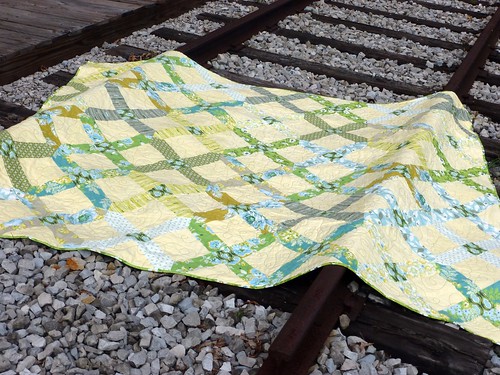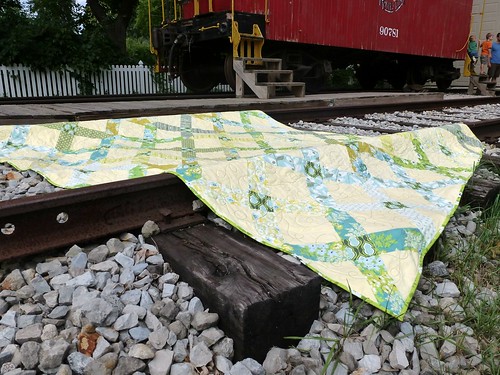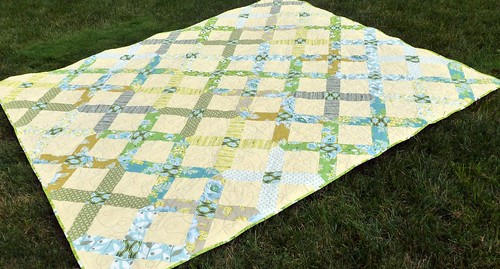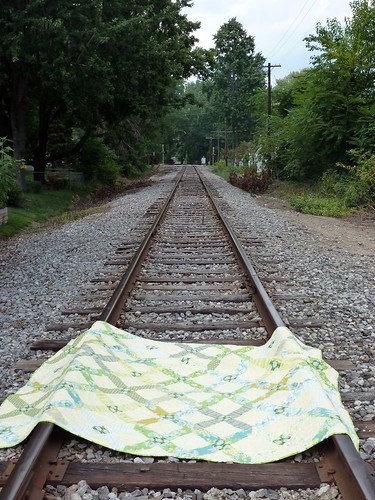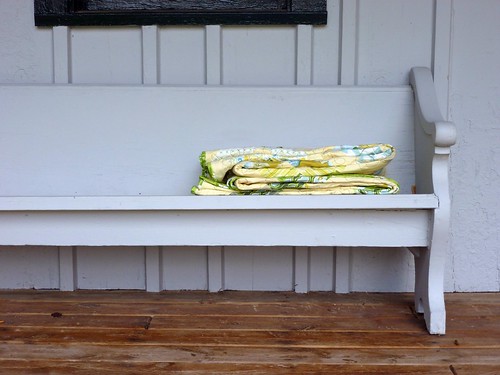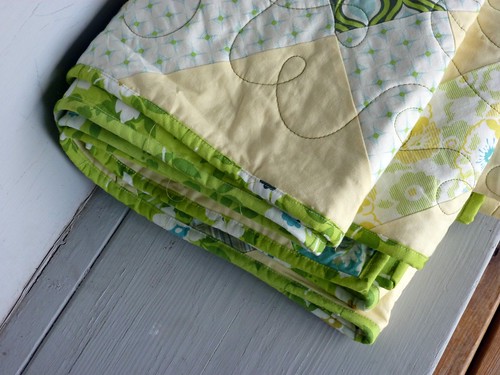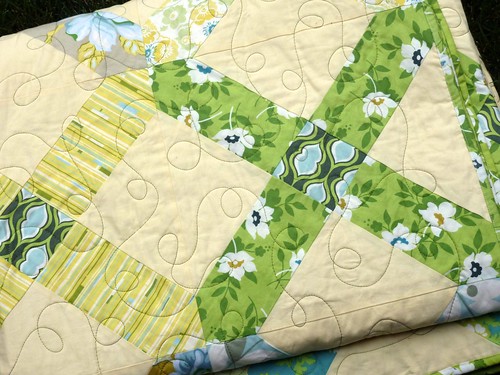Consider me Travel Handmade ready! Whew - it took some determination to make it to the end on this one. But I'm glad to say I've conquered an Amy Butler bag pattern!
Challenges:
1. 6.25 yards of interfacing need to be applied to almost every piece cut.
2. Instructions are clear, but need to be read very carefully. I read each step at least 2 x before beginning. I found I really needed to focus to avoid spending time with the seam ripper.
3. For some reason my lining ended up larger than the exterior of the bag. So the lining doesn't quite fit as well as I'd like it to. As a result, there are various tucks in the fabric where the lining joins the exterior.....but unless you're really searching for them, I don't think anyone will notice.
Yes Moments:
1. Realizing I'm SO glad I went with Modern Meadow on the outside. Thanks to everyone who helped me decide!
2. Pleats are not hard and I love the look they add.
3. My first covered button. So simple! Must add more of these to future projects.
4. Sewing curves.... I still need more practice, but the practice helps.
5. Realizing the interfacing will make this bag awesomely sturdy. This bag is constructed well. A necessary evil I guess.
6. Just being able to say I've made it thru an Amy Butler pattern. It was no easy task for a quilter. and I feel like I really accomplished something!
Here's what I'll look like carrying it at the Sewing Summit!
Challenges:
1. 6.25 yards of interfacing need to be applied to almost every piece cut.
2. Instructions are clear, but need to be read very carefully. I read each step at least 2 x before beginning. I found I really needed to focus to avoid spending time with the seam ripper.
3. For some reason my lining ended up larger than the exterior of the bag. So the lining doesn't quite fit as well as I'd like it to. As a result, there are various tucks in the fabric where the lining joins the exterior.....but unless you're really searching for them, I don't think anyone will notice.
Yes Moments:
1. Realizing I'm SO glad I went with Modern Meadow on the outside. Thanks to everyone who helped me decide!
2. Pleats are not hard and I love the look they add.
3. My first covered button. So simple! Must add more of these to future projects.
4. Sewing curves.... I still need more practice, but the practice helps.
5. Realizing the interfacing will make this bag awesomely sturdy. This bag is constructed well. A necessary evil I guess.
6. Just being able to say I've made it thru an Amy Butler pattern. It was no easy task for a quilter. and I feel like I really accomplished something!
Here's what I'll look like carrying it at the Sewing Summit!
Do I see more Amy Butler bags/patterns in my future?? Yes.
Anytime soon? Nope.
For now, I've spent the past month working on this bag and know what I realized??
I really miss quilting.
There's still just something about working on a quilt that's really IT for me.
I'm gonna go cut up some squares or something....



